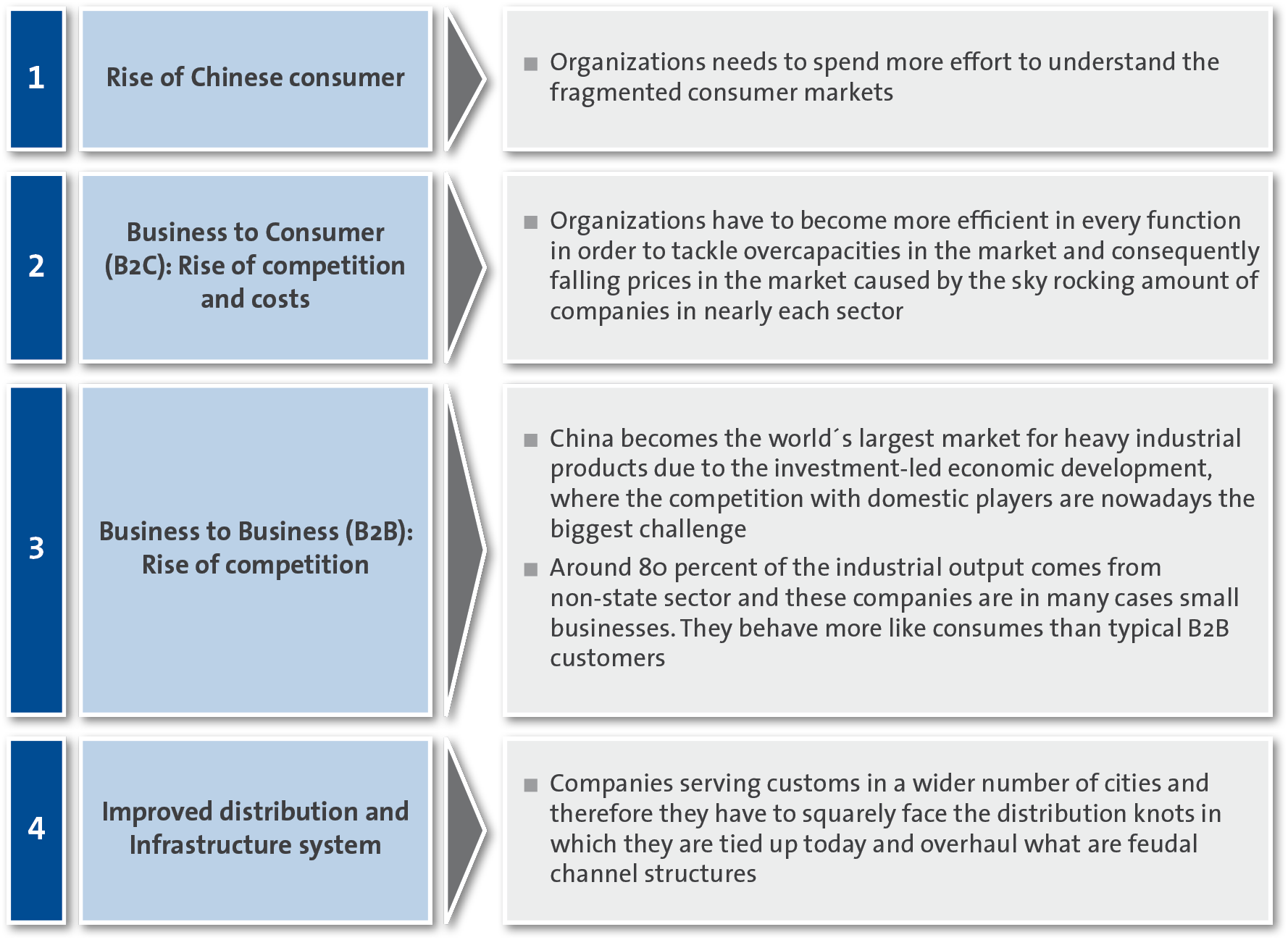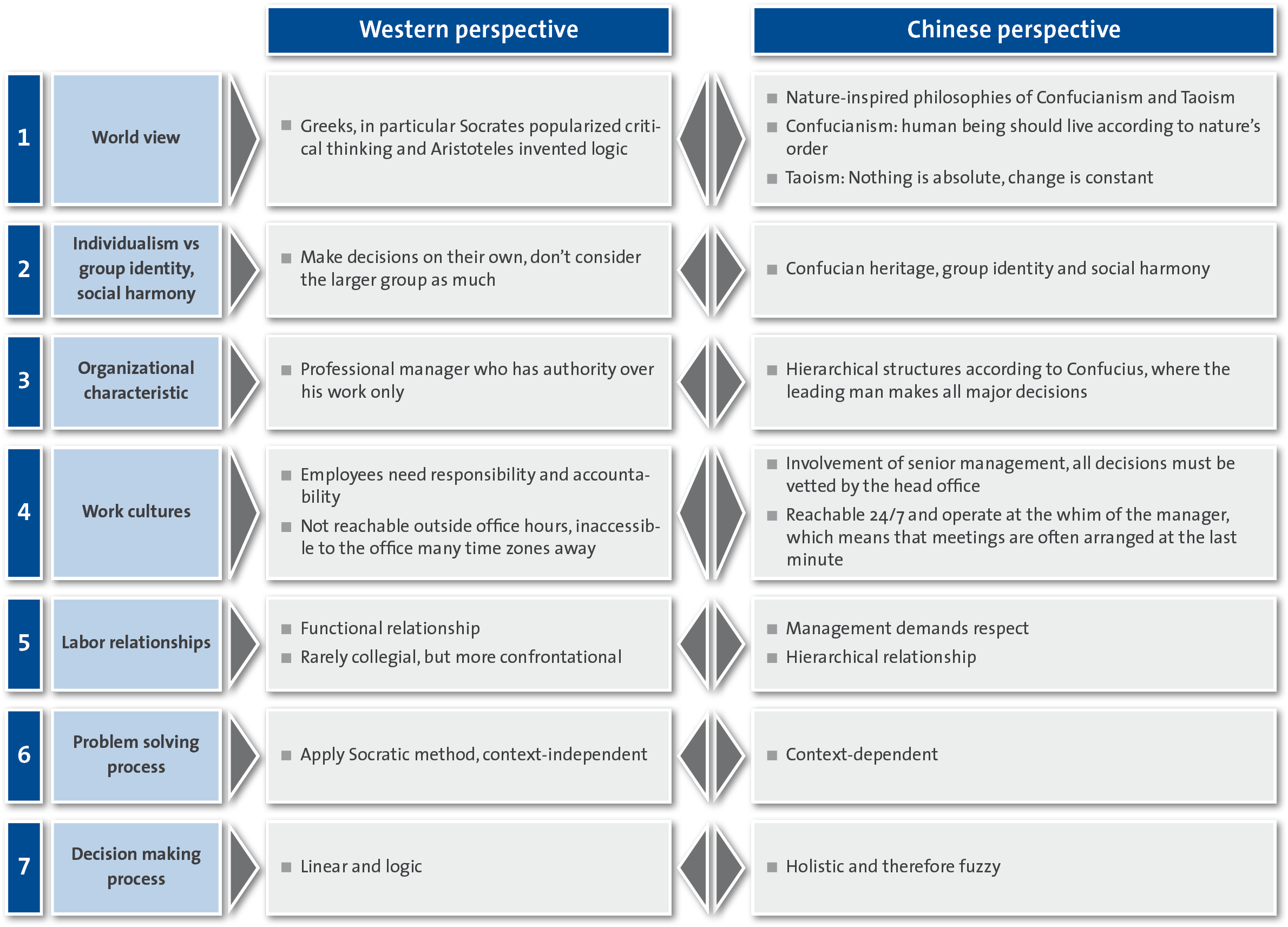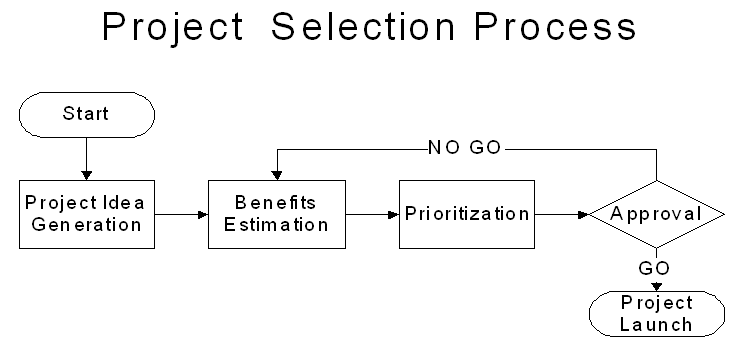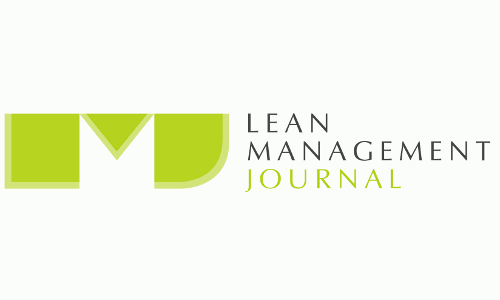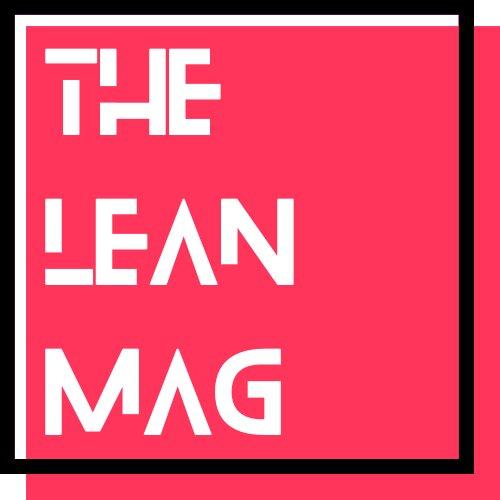Organizational change needs the right management in China
The article outlines the steps that companies have to take to achieve outstanding organizational structures and processes in a Chinese context. Part 1 provides an overview of how the changes in the business landscape in China that have taken place in recent years urgently require Western companies to pay more attention to organizational structures and processes. To understand Western and Chinese management thinking, Part 2 describes the cultural differences between China and the West. The different worldviews substantially influence how the two sides conduct business. Part 3 concludes with the description of an organizational framework necessary to be successful in China, where the degree of adaption to Chinese practices will vary by function and process.
China is the story of the twenty-first century: an immense nation changing at an unprecedented pace. The comment most frequently made by executives visiting China these days is probably the following: “I am amazed at how much China has changed since my last visit here.”
Despite a marked slowdown in China’s economic growth rate since 2012, this is still forecasted at around 6.5 percent, which is higher than the growth rate of most Western mature economies (i.e. EU, Germany, US).
In 2017, the possibly more stable but also more moderate economic growth, generally referred to as “China’s New Normal” is no longer news to Western organizations operating in the Chinese market. It is becoming apparent that the shift from investment-driven to more innovation-oriented business management will increasingly present companies who were able to benefit from quick successes in recent years relatively easily with serious challenges in the near future.
Western companies who are operating manufacturing facilities in China are facing daily operational challenges, such as rising labor costs, shortages of critical production line workers, an increasing need to comply with a plethora of environmental, health and safety requirements in a regulation regime that is much tougher than that of their countries of origin. Besides that, competition between domestic and foreign competitors is growing: more than 80 percent of companies identify domestic competition as a significant challenge. The rules of competition as well as the way global players are used to operating in their mature markets are changing, and the business landscape in the People’s Republic is beginning to look familiar to that in the Western mature markets.
In China, where competition is white-hot, the ability of companies to execute strategies extraordinarily well – across every organizational function and core process of the company – is key to stay competitive. Suddenly, good enough is no longer good enough.
Changing business landscape in China
Personal experience has helped TMG identify four major market developments forcing companies to adapt their management and leadership structures and processes in China urgently if they are to maintain their agility and flexibility.
The first development is the rise of the Chinese consumer. The real buying power in China is shifting to the new middle class. The challenge for enterprises wanting to develop this new target market is that it is neither monolithic nor geographically located in only one area, namely on the more developed East coast of China. Potential new consumers of this segment are now also located in second- and third-tier cities. The younger generation is developing a different taste than their parents, which leads to more opportunities for companies to develop and launch new products in this particular market. For a company, this also means that it needs to put more effort into really understanding the fragmented consumer market China is today.
A second development is the rise of competition and costs: companies do not only rival other Western multinational companies but also vie for market share with their domestic counterpart. For example, more than 200 Chinese companies build cars and trucks and more than 5,000 companies make components for these manufacturers. Not only does this multitude of companies in each industry sector cause overcapacities. Western multinationals also compete against low-cost domestic suppliers who increasingly manage to improve the quality of their products. This growing competitive environment is compelling companies to optimize their organizations by making every business function more efficient and thus saving costs whilst maintaining profits.
Similarly, the developing economy is resulting in a rise in competition in B2B markets. Due to the investment-driven economic development, China is becoming the world’s largest market for heavy industry products. In this market, local companies increasingly challenge international players to a duel. In addition, about 80 percent of industrial products come from small non-governmental companies, which behave more like consumers than typical B2B customers do. This third development again obliges a company to execute operations at an excellent level in order to be able to compete with low-cost domestic players.
A fourth noticeable driver is the increasingly developed distribution and infrastructure system in China. In the last few decades, the government has invested heavily into roads, railways, sea- and airports. It has also invested in communication channels and is working on installing a broadband network called the “800 million network” named after the number of users it will be able to support. In order to take advantage of these developments, European enterprises ought to overhaul their distribution strategies by, for example, establishing new distribution centers further in-land or delivering to locations in the Western parts of the country where consumers could, to date, not easily be reached.
China and its business environment are changing at high speed. For Western companies doing business in China, the rapid evolution of markets and competition crucially demand an exacting focus on world-class organizational structures and processes.
Historic roots of Western and Chinese organizations
To operate successfully in the Chinese market as a Western company, it is of utmost importance to understand the culture underlying Chinese business conduct. A look at the historic roots of Western and Eastern thinking helps put organizations in their cultural context.
The modern way of Western living dates back to the Greeks, in particular to Socrates who advocated critical thinking and Aristotle who invented logic. A Westerner’s belief in logic is untiring: if something does not sound right, then it must be wrong. In an extreme case, this can lead to the unfortunate decision that someone who is not your friend must automatically be your enemy.
Individualism is a big value in Western society. People are raised as individuals and make decisions based on their own experience and opinions. In contrast, the focus in China is on the identity of the group and social harmony.While many great thinkers throughout China’s history have influenced its culture, it is generally understood that Confucianism and Taoism have had the greatest impact on Chinese culture and managerial practices of today. The system is based upon the notion of hard work, loyalty and dedication, learning and social order. These values are still of utmost importance in today’s organizations in China. In the Confucian worldview, people should live according to nature’s demand and everyone is related to everything, so that an individual’s actions can have an impact on someone else. Therefore, one has to be considerate in one’s behavior. In Taoism, nothing is absolute and only change is constant. Progress is made by cooperating and less so by beating one’s opponent. This results in a give-and-take negotiation process, which is sometimes different from the West where a person is accountable for himself and for no one else.
While individualism tends to be promoted in the West, the Chinese are encouraged to act for the greater benefit of the group and, in business life, with the welfare of the organization in mind. This cultural value of collectivism manifests in the expectation of employees to work hard for their employer and to put the good of the company before their individual betterment.
In traditional Chinese Confucian organizations, hierarchy is more predominant and respected than we may be used to in the West. The head of the company has achieved this position because of his age and experience. His or her subordinates will look up to their leader as an elder who knows everything. Employees will rarely question or challenge their superior even if they disagree with his opinion or the decision taken.
Therefore, for a Western operation in China, the key to encouraging employees to participate more actively in the decision-making process is to invite them explicitly to provide input and state their views during meetings and to facilitate a culture where it is accepted practice to speak up without being reprimanded for expressing one’s opinion.
In contrast, a Western organization relies on professional managers who perform their work independently. A company in a developed market will thus be able to give more freedom to their employees, whereas in China it needs to adapt its structure and hierarchy to manage people and develop their skills more actively.
Another issue that our consultants identified when comparing Chinese and Western modern day-to-day management is the difference in working culture. In Western countries, employees need responsibility and accountability to experience a sense of job satisfaction and fulfilment. Working hours are more clearly defined so that employees maintain stricter boundaries between their work and private life, which allows them to plan their working and leisure time more reliably. In contrast, their Chinese colleagues will be expected to be available for head office enquiries 24/7 and often need to schedule unplanned meetings at the request of senior managers at the last minute. This practice can vary of course, depending on the particular context in which the company operates. In day-to-day business, a Chinese businessperson will avoid direct conflict and prefer to work out a strategy “behind the scene” rather than through entering into a dialogue during a business meeting. Chinese people will rarely attack or criticize another person in public or say no to a request since this would damage their reputation and could lead to both parties losing face. This, to a Chinese person, amounts to a loss of honor and respect and is to be avoided at all cost. However, this behavior does not necessarily mean that they are in agreement with what is being discussed. For foreign business people who are not familiar with the local culture, this concept of not losing or rather gaining or giving face can be very confusing.
The differences described above, which TMG Consultants have witnessed many times in client projects, also characterize the relationships between employees. Workers do not only show a high degree of respect for their superiors but also for one another, this leading to a very cooperative atmosphere. Colleagues do not contradict each other and avoid confrontation because also on a peer level, it is essential not to lose face. The Chinese practice of “Gong Jian” serves as an example: in order to address a problem, a large number of people, managed by their group leader, are given the task to work out the solution to a problem. This is largely done by trial and error and consequently can take a long time. Westerners, on the contrary, would approach the issue analytically rather than involving a higher number of employees in the process. Chinese employees would also be a lot more reluctant than their Western counterparts to assume responsibility and take a decision independent of their manager if it is not a clearly defined part of their job description. In comparison, employees in the West have a specific job function and relate to their colleagues through functional rather than hierarchical relationships. This can result in someone taking a decision they feel needs to be taken at that moment in time in order to achieve a better outcome even if it is generally non in their remit to do so.
When Westerners solve problems, they often use the somewhat context-independent Socratic/ Aristotelian method of logic and critical thinking and will thus always approach a problem using the same method. The actual issue plays a secondary role in these proceedings. Chinese employees usually prefer a more context-dependent approach to make decisions and solve problems. This means that they tend to seek a solution by considering comparable problems that they have resolved in the past. The previously found solution will then be transferred to the situation at hand.
Those differences may lead Westerners to conclusions that do not always correspond to the facts, an example of which would be the collapse of the Chinese financial system. So far, this has not happened and in fact, it is not likely to happen as was many times predicted in the Western news.
However, this is not due to a lack of high debt levels or other pressures weighing on the economy. The reason rather lies in the different attitude of the players towards debt and obligations. Instead of primarily satisfying the claims of the creditors, they are more inclined towards sacrificing individual interests for the benefit of the greater and common good. This way, they act in the spirit of a harmonized culture.
Finally, the decision making process in the West follows a linear and logic approach, whereas decisions in Chinese organizations are often made taking a more holistic framework into account. To a Westerner, this can make them appear fuzzy and thus difficult to comprehend. For example, it can feel premature to consider long-term strategic goals that may, one day, evolve out of the current situation but appear like a quantum leap into the future at a time when decisions are needed that address the present situation. The Western rationale would be to avoid acting precipitously but instead to proceed in a targeted, systematic manner.
Balancing different cultural aspects in an international environment such as China is a daily topic in the workplace. By understanding the cultural values and differences people operate and live in, employees can minimize misunderstandings and frustration on both sides, develop an enjoyable working environment as well as positive working relationships and leverage the company’s effective organization for the growth of the business.
Organizational framework necessary to be successful in a Chinese context
When executives start improving their local organizations and processes in order to address the requirements of the changing business landscape – whether overhauling a single function or broadly re-organizing the whole business – the main effort involves adapting organizational standards that have proved to work globally to China.
World-class execution counts everywhere, also in China. However, only those managers appear to be successful who adapt, not adopt global organizational standards. To establish a successful operation, companies must tailor management practices that have proved successful in other parts of the world to the particular qualities of the Chinese business environment, whilst the degree and nature of adaption will vary by organizational function or process. Bringing in foreign expertise and practices is thus only part of the success of international corporations. The winning formula combines this with a high degree of flexibility and respect for local practices. Through many years of being a player in the Chinese market, both working with domestic clients and those whose head office is based in the Western hemisphere, TMG Consultants were able to recognize that successful client projects shared a common framework for achieving efficient organizational structures and processes. Because each company is unique, this framework can, of course, only serve as the basis for the adjustments an organization needs to make to be successful in markets that culturally differ from familiar Western markets as much as that of the Chinese.
Highly engaged leadership will ensure that companies can cope with the complexity of Chinese culture. Leaders fulfil multiple important roles: setting stretched targets, ensuring senior-level sponsorship, orchestrating resources, overcoming barriers and acting as facilitator. In Chinese, facilitation is translated as “yindao” meaning guiding or leading. “Yin” means to attract, extend and involve and “dao” means leading and transmitting. Facilitative leadership is thus no new method in China. Traditional societies used facilitation in community building to discuss important topics and reach agreements through a collective approach. In contrast to top-down decision-making, the benefit of facilitative leadership is that it creates initiative and ownership from the employees. This methodology also helps stimulate innovation and enables participants to explore new possibilities in problem solving. Besides this, it helps employees gain passion for their work and brings out the best in people. The interaction in the group aims at people learning from each other, creating trust and building strong relationships between the participants.
Companies who are operating in China know that they have to adapt their style of leadership and organizational structures. TMG clients are using our support to look for new organizational forms, which are more open, participative and agile. They are recognizing the importance of structure and are striving in different ways to optimize global/ local trade-offs and managing global/ local tensions. Collaborative structures like coordinating mechanisms and practices allow successful companies to bring the right employees with the right expertise from across the company together. Creating an agile working environment, i.e. spending a lot of time planning before starting the work might initially not be considered the most efficient way forward in a Chinese environment. In the past, starting the work after only a limited amount of planning, followed by inspection and adaption seemed a good fit for the Chinese culture. However, agile practices focus on learning and continuous improvement, which are beneficial for both, the company as well as the personal development of the team members. A further important factor in agile organizations is the importance of customer interactions. By using agile management methods, companies intend to get customer feedback early on in the process and on a frequent basis. The ultimate goal is to enter the market with a high quality product as soon as possible. In this, the final customer can be of assistance since he or she is the best judge of quality.
The persistent shortage of skilled local resources and the ongoing “war of talent” make continuous talent development a top priority. The difficulty is not only to recruit such talents, but also to develop, retain and align them with the company’s values and goals. Winning companies have implemented a number of practices to tackle these challenges: (a) establishing a pipeline of globally capable local managers, (b) identifying and cultivating local high potentials, (c) developing leaders with global perspectives and (c) making succession planning explicit.
The scarcity of talents requires the local management team to leverage fully the available human resources. In order to maximize their efficiency and utilization it is critically important to establish effective common processes. These support executives in managing inherent tensions between global and Chinese interests, and create transparency and trust. Successful companies employ a number of practices, such as (a) leveraging existing global processes, (b) capturing the benefits of localization in China, and finally (c) sharing best practices and creating efficient connections across the entire organization by implementing shared platforms.
Finally, corporate values are critical to ensure that employees act in compliance with the expected behavioral norms of the cultural setting they work in. Corporate values are particularly critical when subsidiaries operate at a large distance from their headquarters. International companies with operations in a cultural environment as different as China face the challenge of establishing common expectations and finding ways to ensure that everyone in the organization acts according to the company’s values without violating their cultural idiosyncrasies. While corporate values appear to be soft factors, our experience has proved that a hallmark of the most successful companies is the degree to which they lead by example and institutionalize global values.
It is important to bear in mind that companies, when applying this framework, will need to start from their individual position, reflecting their individual stages of globalization, industry specifics and their Chinese operations. Besides that, the way a company is organized – by business unit or by region as well as its degree of centralization or decentralization – significantly affects the way it goes about pursuing organizational advantages for China.
Today, the most thriving Western companies in China are successful because they are brilliant at “applying the global standard to China”. However, this may evolve to “developing the global standard in China and applying it throughout the world” in the near future. Functions that work well in China will influence the global standard more and more. China is already the center of world manufacturing and is on the way to becoming the world’s center of engineering talents. In addition, it is still one of the world’s fastest growing markets, the largest market in many industry sectors (i.e. automotive, robots, household electrical appliances) and the enormous level of competition may be setting a new bar for competitiveness that can be directed to other markets in the world.
At the same time, it goes without saying that executives of Chinese businesses are learning to adopt and adapt to world-class organizational structures and processes quickly in order to stay agile and flexible in the competitive market. Companies like Baosteel, Huawei or Ping An are investing significant management attention and funds in understanding global organizational standards and approaches. Nevertheless, they are unlikely to stop here. Instead, they will develop further and there is a danger that in time, they will overtake the competition from the West. Whether Western companies choose to ignore or to embrace the essential need to make their organizations fit for the Cathay competition, the changes will happen either way. Chinese companies are on a road to success and they are unlikely to want to change their course. After all, why should they leave “their” market to Western organizations if they can at all avoid it?
Therefore, it cannot be emphasized enough that Western companies have to win in China to win in the rest of the world.
By Timo Wiegmann
Dr. Timo Wiegmann has been serving as the Managing Director at TMG Consultants (Shanghai) for the past 14 years. TMG Consultants pride themselves on being the premier partner for the manufacturing industry, with an aspiration to improve the world of production. Tackling key issues of the manufacturing industry, constantly focusing on the topics that matter to you, they aim to serve as competent partner for the top management to develop far-sighted strategies and sustainable solutions.
Dr. Wiegmann’s Industry Expertise furthermore comprises of Manufacturing, Automotive and Process industry, with functional competencies in developing corporate & functional strategies; global production footprint strategies; Business development; Execute commercial & technical due diligence projects; Execute restructuring & re-organizational projects; Factory planning & realization, among many others.
Connect with him on LinkedIn.



